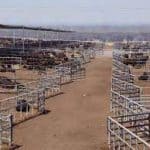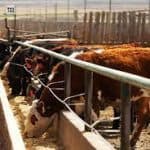
The first step in a limit-feeding program is to offer cattle a consistent diet with few fluctuations. This means that they must be fed at the same time every day with minimal variation in the amount of feed offered. It is also important to provide sufficient bunk space. Mature cows need between 24 and 30 inches of bunk space per head. Inadequate bunk space can lead to irregular feed consumption patterns, acidosis, and bloat.
Contents
Wheat
There are many advantages to feeding limit-fed diets to beef cows. These rations should provide enough energy for the cattle to perform well and maintain a healthy body condition. They also minimize the use of forage that can be scarce. To achieve the maximum benefits from these diets, feed your cattle approximately 0.5 percent of their body weight per day. You can vary the proportion of grain to roughage according to available forage. Regardless of the amount of grain you feed, always make sure that the ration is sufficient to meet the cow’s energy and nutritional needs.
Wheat can be fed to cattle in small amounts, but it’s best to limit its intake to 40 to 50 percent of the grain mixture. Wheat is a highly fermentable food and needs to be introduced to a cattle’s diet slowly, ideally over two weeks. It should also be coarsely ground, not finely ground, as finely ground wheat can cause acidosis and bloat. Wheat is also not appropriate to be fed to young cattle or replacement heifers.
Soybean hulls
While soybean hulls do not have a high mineral content, they can cause health concerns in cattle when fed in large amounts. This is due to the fact that soyhulls expand when they come into contact with moisture in the rumen. This can result in bloating and excessive rumen distention. As a result, it is important to limit soyhulls to a maximum of 1.5% of the animal’s weight.
A study conducted at the University of Arkansas Southwest Research and Extension Center, Hope, Arkansas, examined the effects of limit-feeding diets on the performance of beef cows. The study involved 120 beef cows that were randomly assigned to five diets. One diet was a free-choice hay diet supplemented with corn gluten. The other four were fed corn with rice hulls or cottonseed hulls.
Another risk of soybean hulls for beef cattle is bloating. When fed in high amounts, soybean hulls can cause bloating and choking. They are also dusty and bulky and should be used in small amounts. They are ideally pelleted and mixed with other feeds such as molasses or silage.
Corn gluten feed
Limiting corn gluten feed for beef cows can help your herd achieve a balanced diet and improve performance. It is a good source of energy and has low rumen undegradable protein. It is also high in fiber, which can improve fiber digestion and decrease starch loads in the rumen. Compared to corn grain, corn gluten feed contains higher amounts of sulfur and phosphorus. However, the levels may vary depending on the manufacturing process.
Corn gluten feed is a byproduct from the corn milling industry, which also produces starch, syrup, and oil. This type of feed is readily available in the southeastern United States and has a low cost, making it an attractive option for producers looking to add protein and fat to their cattle’s diets. However, there are some issues with corn gluten feed that producers should be aware of before using it in beef production.
Corn gluten feed has been studied for its potential to reduce the levels of protein and other nutrients in beef cattle. It is considered a co-product of the corn milling process and is derived from the process of extracting starch from corn and processing it into sugar, fructose, and ethanol. However, it is important to understand that these co-products are different from corn gluten feed.
Limestone
There has been little research on whether limiting the limestone in cattle diets will affect the cattle’s performance. In fact, most of the studies conducted to date have been on cattle fed high concentrations of concentrate. It is important to understand that the levels of limestone in the basal diet are important in determining animal performance.
Research to date has found no convincing evidence to support limiting limestone in beef cow diets. Although limestone does have a role in buffering the effects of other nutrients, animal studies suggest that there is no definitive evidence that limestone is beneficial in cattle diets. Moreover, the positive effects were not significant when the supplement was added to control diets. Therefore, it is important to check the ingredient composition of concentrate rations to see whether supplementary limestone is beneficial for animal performance.
Limestone is a good source of calcium for beef cows. It also works as a buffer and helps livestock thrive on concentrate diets. It can improve daily gain and feed conversion rates, which are important for improving livestock productivity.




